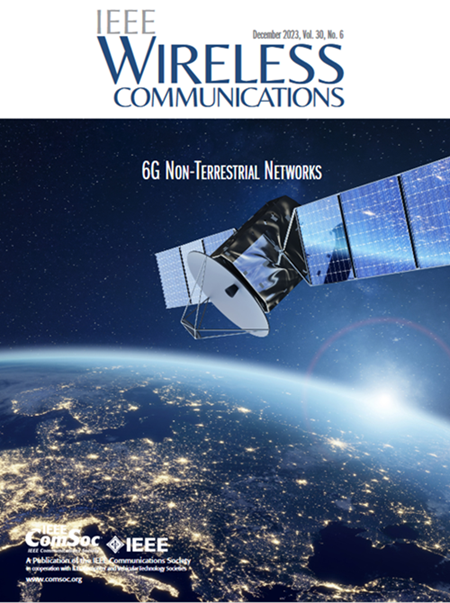Implementing Graph Neural Networks Over Wireless Networks via Over-the-Air Computing: A Joint Communication and Computation Framework
IF 11.5
1区 计算机科学
Q1 COMPUTER SCIENCE, HARDWARE & ARCHITECTURE
引用次数: 1
Abstract
A Graph Neural Network (GNN) conducts the graph convolution for structured data and obtains the weighted sum over the vertices according to its graph structure. However, in the context of a wireless network, the traditional separate implementation of a GNN usually requires the full channel state information, which is hard to obtain in practice, especially for the underlying interference channels. On the other hand, Over-the-Air Computing (OAC) is an efficient analog wireless technique in which the weighted sum can be simultaneously calculated over an equivalent wireless superposition channel. Since the main goal of a distributed learning-based system is the fulfillment of the overall learning task instead of its communication rate, OAC is of great potential for implementing such a system. In this article, we exploit some specific features of the wireless interference graphs and propose a novel task-ori-ented OAC-based framework to deploy GNNs more efficiently in wireless networks. In particu-lar, we take advantage of the structural similarity between OAC and the graph convolution oper-ation over an interference graph, and the chan-nel prediction procedure can be merged into the weight updating procedure. Moreover, the inher-ent noise tolerance of a neural network further ensures its convergence and performance. We also conduct case studies based on the proposed framework and discuss the comprehensive future research directions and open problems.通过空中计算在无线网络上实现图神经网络:一个联合通信和计算框架
图神经网络(Graph Neural Network, GNN)对结构化数据进行图卷积,并根据其图结构得到顶点的加权和。然而,在无线网络环境下,传统的分离实现GNN通常需要完整的信道状态信息,这在实践中很难获得,特别是对于底层的干扰信道。另一方面,空中计算(over -the- air Computing, OAC)是一种有效的模拟无线技术,它可以在等效的无线叠加信道上同时计算加权和。由于基于分布式学习的系统的主要目标是完成整体学习任务,而不是其通信速率,因此OAC在实现这种系统方面具有很大的潜力。在本文中,我们利用无线干扰图的一些特定特征,提出了一种新的面向任务的基于oac的框架,以更有效地在无线网络中部署gnn。特别地,我们利用了OAC与干涉图上的图卷积运算之间的结构相似性,并且信道预测过程可以合并到权值更新过程中。此外,神经网络固有的噪声容忍能力进一步保证了其收敛性和性能。并在此基础上进行案例研究,全面探讨未来的研究方向和有待解决的问题。
本文章由计算机程序翻译,如有差异,请以英文原文为准。
求助全文
约1分钟内获得全文
求助全文
来源期刊

IEEE Wireless Communications
工程技术-电信学
CiteScore
24.20
自引率
1.60%
发文量
183
审稿时长
6-12 weeks
期刊介绍:
IEEE Wireless Communications is tailored for professionals within the communications and networking communities. It addresses technical and policy issues associated with personalized, location-independent communications across various media and protocol layers. Encompassing both wired and wireless communications, the magazine explores the intersection of computing, the mobility of individuals, communicating devices, and personalized services.
Every issue of this interdisciplinary publication presents high-quality articles delving into the revolutionary technological advances in personal, location-independent communications, and computing. IEEE Wireless Communications provides an insightful platform for individuals engaged in these dynamic fields, offering in-depth coverage of significant developments in the realm of communication technology.
 求助内容:
求助内容: 应助结果提醒方式:
应助结果提醒方式:


